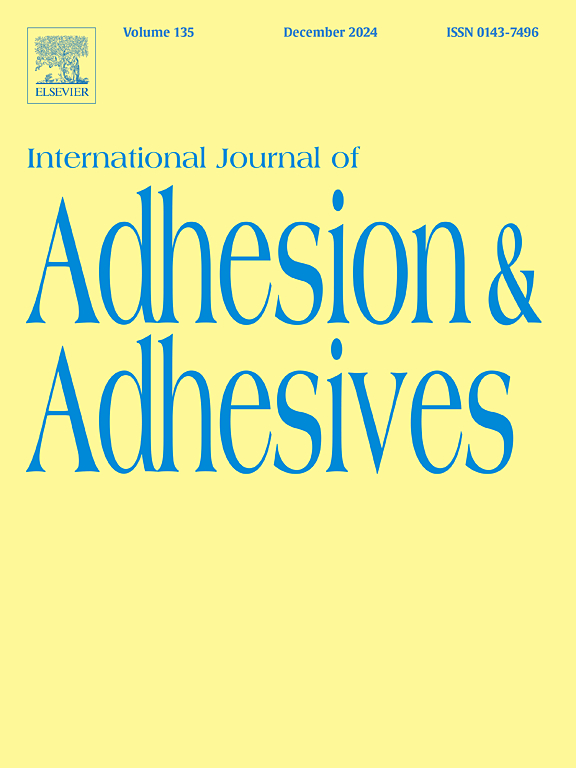Numerical analysis of the structural performance of adhesive T-joints under bending loads
IF 3.5
3区 材料科学
Q2 ENGINEERING, CHEMICAL
International Journal of Adhesion and Adhesives
Pub Date : 2025-05-13
DOI:10.1016/j.ijadhadh.2025.104064
引用次数: 0
Abstract
T-joints are a good alternative to conventional adhesive joints, such as single-lap joints, due to their ability to efficiently transfer bending, compressive, shear, and tensile loads between the T-profile stiffener and the base plate, all while maintaining cost-effectiveness. However, for widespread adoption, a comprehensive understanding of the joint strength and damage mechanisms is essential. Therefore, this study aims to numerically analyse the structural performance of adhesive T-joints subjected to 3-point bending loads using two-dimensional (2D) finite element models, and cohesive zone modelling (CZM) to simulate the behaviour of the adhesive. CZM validation was also accomplished by comparing the joints' behaviour with experimental data. Numerically, peaks of peel stresses at the overlap edges were observed, with sharp gradients toward the inner bond region, as well as shear stresses due to the geometric discontinuity. Adhesives with higher stiffness provide higher peak values of peel and shear stresses, while more ductile ones lead to higher peak loads. The CZM was successfully validated with experiments, and a correlation was observed between energy dissipation and damage propagation, according to a non-symmetrical pattern, and for conditions that minimize the system's functional energy.
弯曲荷载作用下粘接t形接头结构性能的数值分析
t型接头是传统粘合接头(如单搭接接头)的良好替代品,因为它们能够有效地在t型加强筋和底板之间传递弯曲、压缩、剪切和拉伸载荷,同时保持成本效益。然而,为了广泛采用,对接头强度和损伤机制的全面了解是必不可少的。因此,本研究旨在利用二维(2D)有限元模型和内聚区建模(CZM)来模拟胶粘剂的行为,数值分析受三点弯曲载荷作用的胶粘剂t型接头的结构性能。通过将接头的行为与实验数据进行比较,完成了CZM验证。在数值上,在重叠边缘观察到剥离应力峰值,并向内键区有明显的梯度,以及由于几何不连续而产生的剪切应力。胶粘剂刚度越大,剥离应力和剪应力峰值越大,而延性越强的胶粘剂峰值载荷越大。实验成功地验证了CZM,并观察到能量耗散与损伤传播之间的相关性,根据非对称模式,并且在最小化系统功能能量的条件下。
本文章由计算机程序翻译,如有差异,请以英文原文为准。
求助全文
约1分钟内获得全文
求助全文
来源期刊

International Journal of Adhesion and Adhesives
工程技术-材料科学:综合
CiteScore
6.90
自引率
8.80%
发文量
200
审稿时长
8.3 months
期刊介绍:
The International Journal of Adhesion and Adhesives draws together the many aspects of the science and technology of adhesive materials, from fundamental research and development work to industrial applications. Subject areas covered include: interfacial interactions, surface chemistry, methods of testing, accumulation of test data on physical and mechanical properties, environmental effects, new adhesive materials, sealants, design of bonded joints, and manufacturing technology.
 求助内容:
求助内容: 应助结果提醒方式:
应助结果提醒方式:


